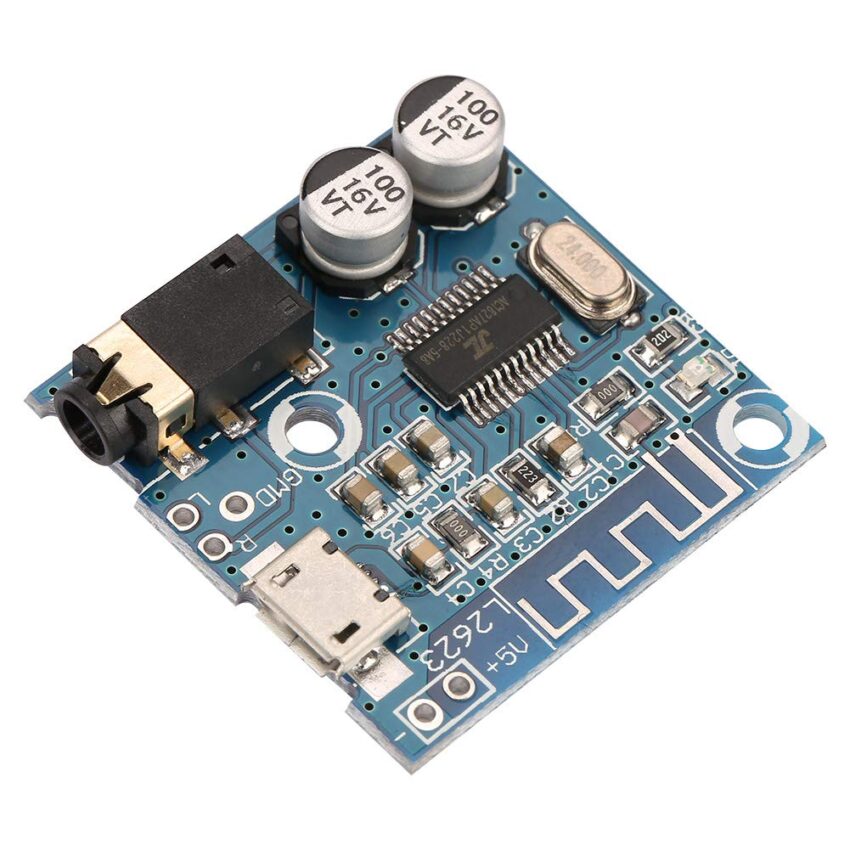
You must already know what Bluetooth is. Maybe some of you already have a Bluetooth headset and use it for days. Listen to songs freely, regardless of the cable holding.
However, before there were Bluetooth headsets, there was a time when Bluetooth was only applied to wireless mice, and before that, Bluetooth could only be used to transfer pictures, songs, or data.
on this occasion we will provide information about bluetooth just got better and still improving.
How Does Bluetooth Work?
Bluetooth transmits and receives radio waves in a band of 79 different frequencies (channels) centered on 2.45 GHz, separate from radio, television, and cell phones, and provided for use by industry, science, and medical devices alike.
The Bluetooth device will automatically detect and connect with other devices. This device can also be connected to several devices (usually eight) at the same time. The connected devices do not interfere with each other because each uses one of the 79 existing channels.
From time to time, bluetooth just got better and still improving. From version 1.0, to now the newest version 5.
Bluetooth By Version
1. Bluetooth 1.0 and 1.0B (1999)
Early versions of Bluetooth technology had a lot of problems, so manufacturers also had a hard time getting the technology to work in their products.
2. Bluetooth 1.1 (2001)
Experienced improvements although many bugs were found in the v1.0B specification that remained.
3. Bluetooth 1.2 (2003)
The pairing speed is accelerated and it also has a higher transmission speed in practice than in v1.1, up to 721 kbps.
4. Bluetooth 2.0 + EDR (2004)
With EDR (Enhanced Data Rate) technology, Bluetooth 2.0 has a much faster data transfer. Has a maximum speed of 3 Mbps and an average speed of 2.1 Mbps.
Interference from other signals has also been updated and 2.0 consumes less power.
Bluetooth 2.0+EDR is the first Bluetooth that can transfer stereo audio.
5. Bluetooth 2.1 + EDR (2007)
After three years, Bluetooth has progressed with the addition of SSP or Secure Simple Pairing technology to make pairing faster and more secure.
Of course, with accelerated pairing, the experience of using Bluetooth becomes more enjoyable. Although until now, this pairing is sometimes really problematic!
Another technology that is present in this version of Bluetooth is EIR or Extended Inquiry Response, which helps users find out information about the device to be connected before the connection starts and consumes less power.
6. Bluetooth 3.0 + HS (2009)
After two years, Bluetooth version 3.0 + HS is here, where HS stands for High Speed, using 802.11 link technology. From the name alone, you must already know the speed added. From its slow speed, 3 Mbps, it becomes much more, namely 24 Mbps.
This is because in this version, the Bluetooth link is only used for pairing and establishing a data access point while sending and receiving data uses an 802.11 wireless link (same as Wi-Fi). And thanks to the new and main feature of this version, namely Alternate MAC/PHY (AMP) which provides 802.11 link support for faster data transfers.
7. Bluetooth 4.0 + LE (2010)
Furthermore, there is Bluetooth version 4.0 + LE, or known as Bluetooth Low Energy. The main advantage of this version of Bluetooth is, of course, as you already know from its name, it consumes less power.
The increased modulation index of Bluetooth 4.0 makes it capable of providing a range of up to 100 meters.
In addition, users can also enjoy transfer speeds of up to 1 Mbps and more controlled security compared to previous versions of Bluetooth.
8. Bluetooth 4.1 (2013)
Transferring data becomes more efficient and has better coexistence with LTE frequencies. This version maintains a connection with little manual intervention, and devices can be both a client and a hub, allowing Bluetooth devices to communicate with each other. Before 4.1, devices were ported to a hub either built into the computer or in a standalone dongle.
Types of Bluetooth based on previous versions are also often interrupted by other wireless technologies such as 4G LTE. Therefore, this version can also overcome this.
9. Bluetooth 4.2 (2014)
Released on December 2, 2014, it introduced features for the Internet of Things. that’s the house that looks like you can talk to it, guys, do you know? Smart TVs and other smart smarts.
Bluetooth version 4.2 improves speed and security. It is even said that the download speed of this version has increased 2.6 times compared to the previous version.
10. Bluetooth 5.0 (2016)
On the technical side, Bluetooth 5 has four times the range, two times the speed, and provides an eight-fold increase in the data broadcast capacity of low-energy Bluetooth transmission compared to the previous version of Bluetooth, which is certainly very useful for stable IOT applications where wireless technology is connected with whole house.
Anyway, Bluetooth 5.0 is already the best compared to previous versions. Last longer, more secure connection, further distance, and faster speed.
The first devices to support Bluetooth 5.0 were the Galaxy S8 and iPhone 8 and X.
Closing
From the information above, it can be concluded that bluetooth just got better and still improving.
